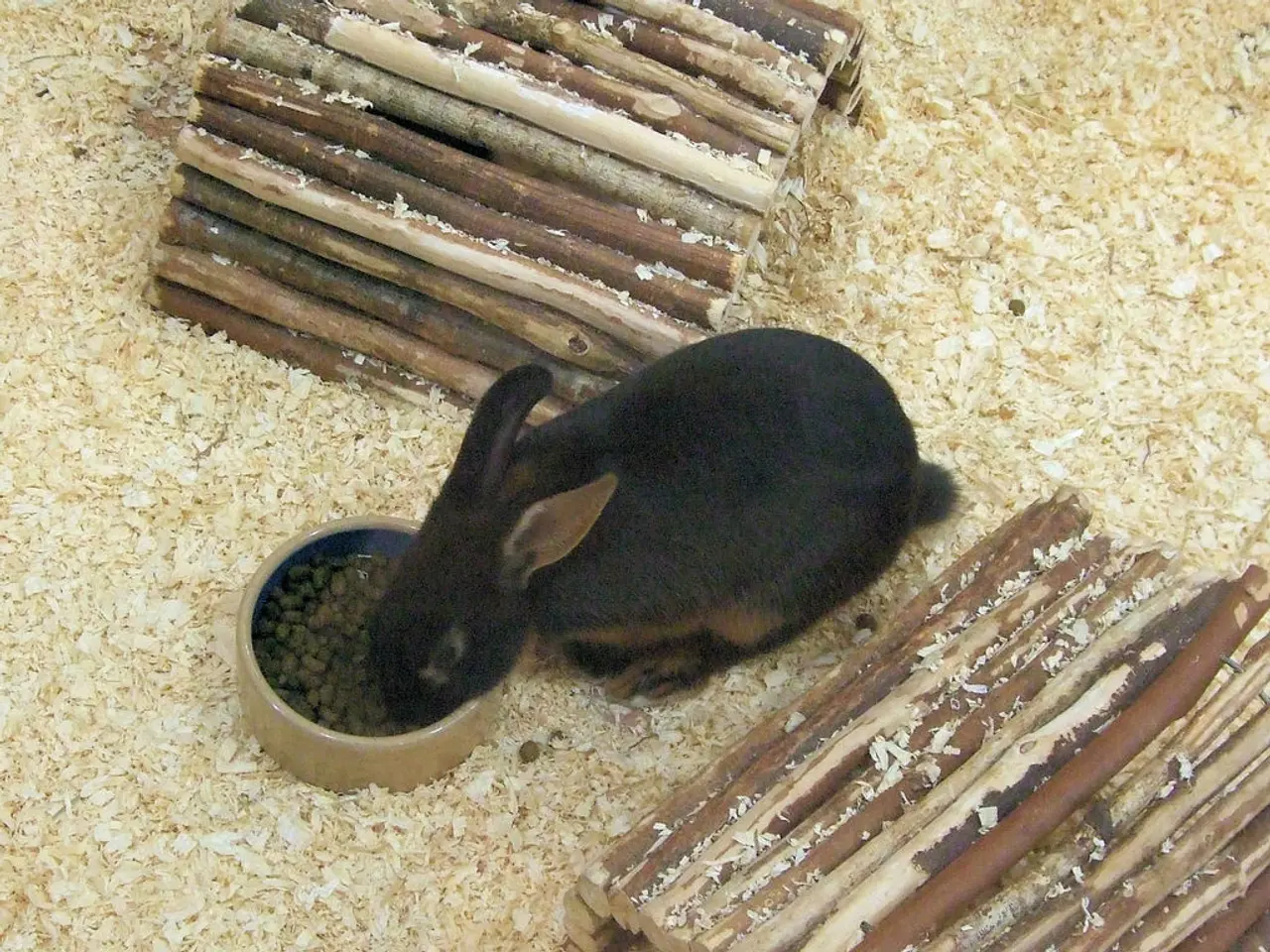Unusual Rabbits Spotted in Fort Collins: Shope Papilloma Virus at Play?
Strange Rabbit Sightings in Colorado: Locals Report Rabbits with Unusual Black Horns and Oral Appendages
Residents of Fort Collins, Colorado, have been witnessing a peculiar sight: rabbits with wart-like growths that resemble deer antlers. These growths have sparked public interest due to their unusual appearance and have been confirmed by Colorado Parks and Wildlife to be caused by the Shope papilloma virus (SPV) [2][3].
The Shope Papilloma Virus: A Virus with a History
First identified by Dr. Richard E. Shope in the 1930s, the SPV is a virus that affects rabbits, causing the growth of wart-like projections on their faces and bodies [1][2]. This virus has played a significant role in scientific research, particularly in the understanding of papillomaviruses, including the human papillomavirus (HPV), which can cause certain types of cancer in humans [1][2].
The Jackalope Connection
The unusual appearance of rabbits infected with SPV may have contributed to the development of the jackalope myth, a legend about a rabbit with antlers or horns. This myth has been a part of North American folklore for centuries [1].
Impact on Rabbits
The SPV primarily affects wild and domestic rabbits, causing skin lesions that can vary in size and appearance. While these growths are generally not life-threatening for wild rabbits, they can be more severe in domestic rabbits, necessitating veterinary care [1][4]. The virus is not transmissible to humans or other animals [2].
Current Situation
While the sightings in Fort Collins have garnered significant attention, officials and scientists emphasize that the virus is relatively harmless to humans and other animals. The concern primarily lies in ensuring the health of domestic rabbits, which may require medical intervention if infected [1][2].
In summary, the SPV in Fort Collins, Colorado, is a phenomenon that has both historical and scientific significance, contributing to our understanding of viral diseases and their impact on wildlife. The ongoing presence of this virus continues to fascinate scientists and the public alike.
[1] National Cancer Institute. (n.d.). Shope papilloma virus. Retrieved from https://www.cancer.gov/about-cancer/causes-prevention/risk/infectious-agents/shope-papillomavirus-fact-sheet
[2] Centers for Disease Control and Prevention. (n.d.). Shope papillomavirus. Retrieved from https://www.cdc.gov/ncidod/dvrd/revb/shope/index.htm
[3] Colorado Parks and Wildlife. (n.d.). Shope papillomavirus. Retrieved from https://cpw.state.co.us/learn/Pages/ShopePapillomavirus.aspx
[4] House, J. D. (2008). Rabbits and Rabbit Diseases. Retrieved from https://www.msdvetmanual.com/rabbits/general-health-and-nutrition/rabbits-and-rabbit-diseases
- The Shope papilloma virus, with roots in environmental-science and science, has been a subject of research in health-and-wellness, specifically in the understanding of HPV, a virus that can cause certain types of cancer in humans.
- The unusual growths on rabbits caused by the Shope papilloma virus have been compared to deer antlers, potentially tracing back to the myth of the jackalope, a creature from North American folklore.
- In the future, scientists may continue to study the Shope papilloma virus to understand its impact on wildlife and potential implications for other animal species.
- As the Shope papilloma virus can have more severe effects on domestic rabbits, it is crucial for mental-health and health-and-wellness awareness to educate rabbit owners on the signs of infection and the need for prompt veterinary care.




